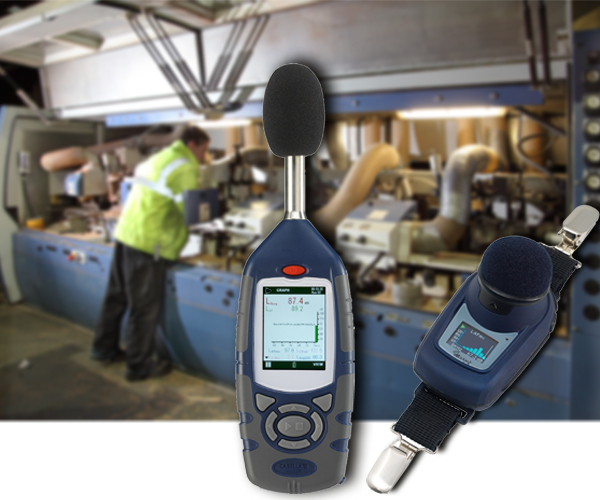Casella UK
Wolseley Rd, Kempston,Bedford MK42 7JY
+44(0)1234844100
info@casellasolutions.com

Excessive noise exposure is preventable, but the effects are permanent and potentially debilitating. Noise in the workplace is common, particularly when workers operate high-powered tools and machinery. Prolonged exposure to dangerous levels of noise is concerning and could be preventing workers from operating at their best. Monitoring is an effective tool for improving such conditions, providing concrete data and highlighting avenues for change. Monitoring delivers accurate insight into noise levels, but with many devices on the market, it can be difficult to identify what type of product is most suitable for your working environment. Is it better to use a noise dosimeter or a sound level meter, and what are the differences between the two?
Sound level meters
A sound level meter is a handheld device that enables measurements to be taken at the ear (within 10 cm to 15 cm) with the instrument pointing at the noise source. This process must be repeated for both ears for all duties employees perform, making it possible to calculate an accurate record of daily exposure. Settings on these meters can be adjusted according to the type of noise being assessed. Monitors should be compatible to the international IEC 61672 Class 2 standard ensuring correct measurements are made.
When using a sound level meter, measurements must be started at the beginning of a task, representing workers’ actual exposure. If workers likely are to be exposed to high levels of impulsive noise, emitted from heavy pressing operations or sheet metal working, peak noises must be measured for accurate results and compared with peak action levels. When conducting noise surveys, sound level meters are the preferred supporting device, as the operator is present, ensuring the noises measured are of good quality. A representative measurement is made for each job function, with the exposure time for each, ensuring an 8-hour exposure can be calculated as a result.
Dosimeters
Dosimeters are small devices that measure personal exposure. These are small, shoulder-worn devices. They can be started at the beginning of a shift and should be used until the end of the day, when data can be uploaded onto a computer, detailing the history of the noise exposure and highlighting where high exposures occur. If the dosimeter is placed on an employee who then makes a diary of times and jobs performed throughout the day, the employer will be able to see the operations that require more effective noise controls.
It is best to use dosimeters for individuals with a complex work pattern and varying noise level exposure, or when certain tasks, such as forklift truck driving, make it difficult to monitor with a sound level meter. It is important to remember that noise dosimeter measurements are open to spurious results from employees, especially when first used. So, high exposures should be checked to see whether they are a legitimate part of the worker’s exposure. Modern noise dosimeters can record the actual audio. This would allow the sound to be played back to determine what the exposure was from, such as a particular machine, or indeed that it was spurious.
Ensuring regulations are met, employers must buy dosimeters that are compliant with the IEC 61252 standard.
Monitoring
Sound level meters and dosimeters are quick, simple and easy to operate, allowing for accurate insights into workplace noise exposure to be collated for all jobs.
By investing in monitoring solutions, employers could change workplace practices and implement noise control, preventing employees from developing hearing issues and suffering long-term consequences as a result of working conditions.